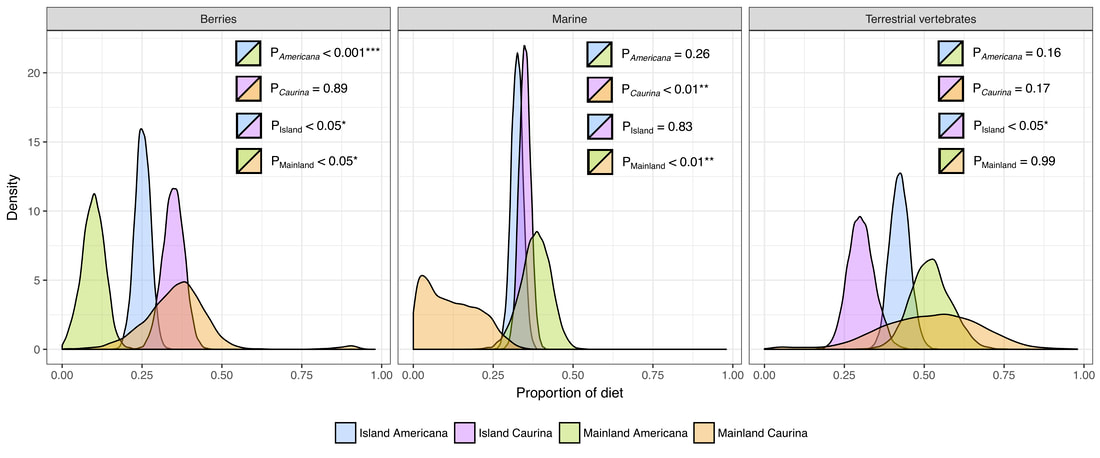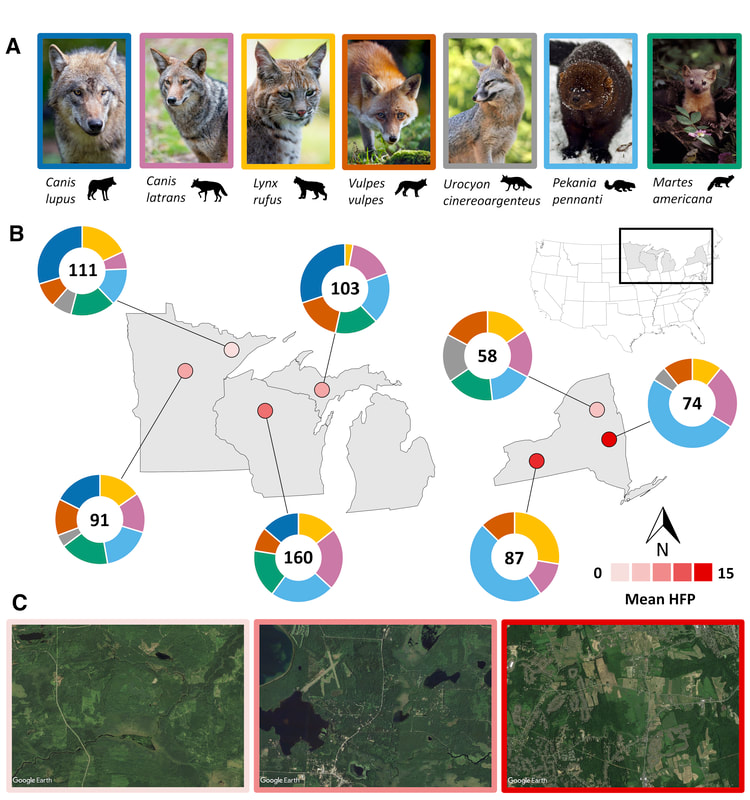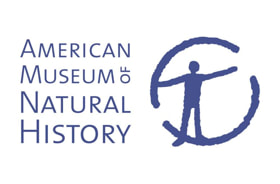|
The widespread loss of trophic interactions since the Pleistocene is one of the most lasting consequences of human proliferation. Re-establishing trophic complexity is now a global ecological priority, with the restoration of mammalian carnivores promoted as a means to preserve biodiversity and ecosystem functionality. This predator-driven ecological restoration hinges on the conservation of functional roles across systems, but increasing evidence suggests trophic interactions and functional roles are regulated by environmental factors like landscape and community composition.
To test the conservation of functional roles, I developed a novel stable isotope framework to compare foraging dynamics across space, time, and species. I then assessed Eltonian niche conservatism across carnivore populations and quantified the relative influence of endogenous (e.g., phylogeny) and exogenous (e.g., landscape, community) drivers of foraging. I uncovered widespread dietary plasticity across carnivore populations - even among closely related species in similar landscapes (Fig. 1, Manlick et al., 2019) - indicating that trophic interactions and functional roles are likely context specific. Moreover, community composition and competitive interactions had strong effects on carnivore foraging and function. Fig 1. Resource assimilation by four marten populations in the Pacific Northwest. Posterior distributions represent the probability of resource use for 3 functional prey groups: berries, marine‐derived resources, and terrestrial vertebrates. Diet contribtuions were estimated for American (Martes americana) and Pacific (Martes caurina) marten populations using stable isotope mixing models. Inset significant tests illustrate statistical differences in prey use by population across island and mainland sites. Ultimately, this work demonstrated highly variable Eltonian niches across closely related species in similar ecosystems.
|
To assess carnivore foraging and competitive interactions at broader scales, I quantified trophic niche dynamics across Great Lakes carnivore communities (Fig. 2). Consumer foraging and competition are defined by the partitioning of three primary niche axes - space, time, and resources - but human disturbance is rapidly altering the spatiotemporal distributions of animals. The impact of humans on resource consumption and niche partitioning across communities, however, is poorly understood. I used stable isotope analysis of 684 carnivores from 7 communities to assess resource consumption and trophic partitioning across a gradient of human disturbance and found that consumption of human food subsidies, trophic niche width, and trophic niche overlap all increased with human footprint (Manlick and Pauli 2020). This research shows that humans fundamentally alter resource niches and competitive interactions among terrestrial consumers. Moreover, this study shows that human disturbance – most notably food subsidization – increases the probability of human-carnivore conflict and interspecific killing among competing carnivores.
Fig 2. Distribution of carnivores from 7 sites across gradient of human footprint. (A) Sampled species: gray wolves (Canis lupis, dark blue), coyotes (Canis latrans, violet), bobcats (Lynx rufus, yellow), red foxes (Vulpes vulpes, orange), gray foxes (Urocyon cinereoargenteus, gray), fishers (Pekania pennanti, light blue), American martens (Martes americana, green). (B) Donut plots with sample size (center) and proportion of species sampled per site, red points illustrating mean human footprint index (HFI) per site and inset map with site locations. Photo credit, left to right: Tambako the Jaguar/Flickr, Tambako the Jaguar/Flickr, Tambako the Jaguar/Flickr, Tambako the Jaguar/Flickr, Renee Grayson/Flickr, ForestWander/Creative Commons, United States Fish and Wildlife Service/Public Domain.
This research was supported by:








